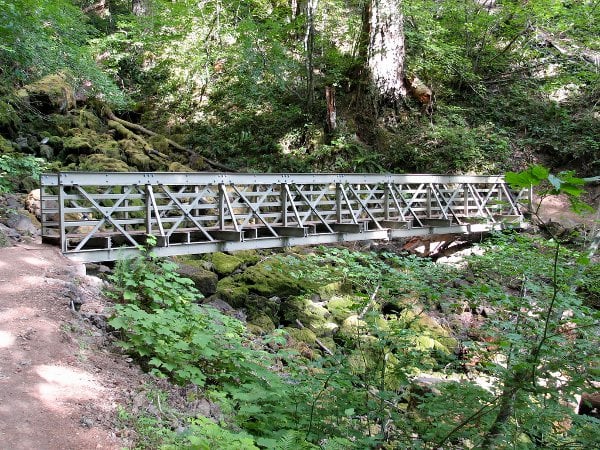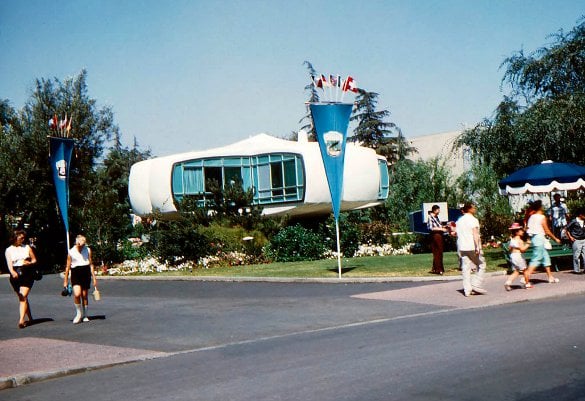Architectural designs of the future have always been imagined as shiny all metal concepts, with lots of sleek edges and polished finishes, so it is somewhat surprising to see that in the 21st century some of the most innovative designs feature the use of recycled plastic materials. This may be due to the durability of plastics, their prevalence in daily life, and the ever growing green industry with a heavy focus on recycling. A look around the world shows an array of innovative designs built from recycled plastics which continue to move the world of construction and design into a more environmental future.

Recycled plastics in bridges - courtesy Keith Daly
A visit to Peeblesshire, Scotland allows an up-close look at the record-setting 90 foot bridge made of recycled plastics. This is no experiment in classroom crafts with plastic bottles held together to merely resemble a bridge. Britain’s Vertech Composites was behind this feat in modern engineering, making use of a material composed of recycled plastics that was developed at Rutgers University. Not only is this a green design as it employs recycled materials, but it is more durable than traditional design materials and will not require as much upkeep due to the fact that plastic does not rust. The fully functioning bridge can hold 44 tons, and can be crossed by trucks hauling heavy materials. The successful employment of the revolutionary composite plastic has since been adapted for use in creating railroad ties and other building materials.

Europe's first plastic pedestrian bridge goes up - courtesy inhabitat
At the opposite end of corporate design and planning, is the legendary man-made Spiral Island, with the entire base made of recycled plastic bottles bundled together in nets. It is literally an island built on a plastic foundation, moveable and mythical all at once. The first Spiral Island project was started in 1998 by Richart Sowa with a reported 250,000 plastic bottles supporting his man-made beach and two-story home that featured solar power and other green living features.
Unfortunately, Hurricane Emily in 2005 destroyed this project in alternative, natural living. Sowa claims it took only a week to clean up the scattered debris from the storm, as a destroyed environmental design cannot be left as wreckage to pollute the water and nearby land. 2008 saw the completion of a second similar island. Sowa has dubbed this one as Joyxee Island, although many refer to it as Spiral Island II. The new design floats atop 100,000 plastic bottles and features impressive extras such as a solar powered waterfall, a wave-powered washing machine, and more. It is open for tours, and can currently be found floating near Cancun, Mexico.
Taiwan’s impressive EcoARK makes use of 1.5 million recycled plastic bottles in its nine-story structure. The idea is said to have evolved from the realization that the plastic tea bottles were the main component of the trash. PET bottles were converted into POLLI Bricks which allow the building to be deconstructed and reconstructed easily, explaining why it receives so much praise for being a light-weight, movable structure with a small carbon footprint. Another awe-inspiring component of this environmental design is that it has been created to withstand natural disasters such as typhoons and earthquakes, playing on the durability of using plastics as a building material. Solar-power supports the LED lighting featured at night, daytime light easily enters through translucent material, and the building employs water falls for insulation.

Original House of the Future from Monsanto 1957 - courtesy Pubsub and Gorillas Don't Blog
The recycling theme will continue once the building, which was commissioned to use during the 2010 Taipei International Expo, is no longer needed. Plans to take the building apart and distribute the parts to school children to study green design will only add yet another leg to the many cycles of these plastic bottles which once were used to hold beverages, then showcased in an award-winning green design, and lastly used to educate future builders and innovators.
About the author: Erik Dries has extensive experience working with cast polyurethane for multiple applications. He enjoys sharing his experiences on various blogs.